The brakes of your vehicle provide vital safety functions, such as allowing you to decelerate quickly and prevent or minimize impacts in an emergency.
But did you know that your brakes do more than stop your car? Your brakes also play a significant role in starting your car with an automatic transmission!
A brake pedal that is stiff and won’t depress can be caused by several different things, including insufficient vacuum pressure, air in the hydraulic system, a leak in the hydraulic system, or simply dirt and grime on the pedal.
Furthermore, your car won’t start due to a faulty battery, fuel pump, starter motor, or ignition switch.
If none of these components work properly, you will need professional assistance for your car to run again.
Having trouble starting your car is frustrating. If the brake pedal is also very hard, it can be very confusing.
Does this have anything to do with each other? Continue reading to learn some tips for fixing the problem.
Is It Necessary To Depress The Brake Pedal Before Starting The Car?
Yes, most automatic vehicles must be started by depressing the brake pedal.
No matter how hard you turn the key or press the start button, if you don’t press the brake pedal, the ignition circuit will not engage.
It is for this reason that a stiff brake pedal can make it difficult for you to start your car.
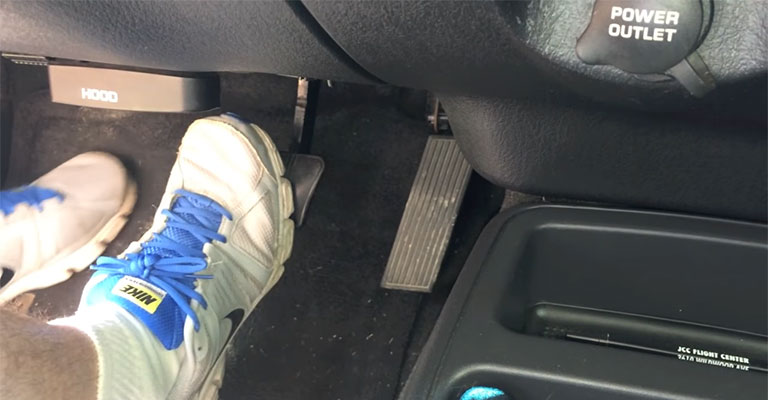
10 Reasons Why Your Brake Pedal Is Stiff And Car Won’t Start
It’s not uncommon to experience a stiff brake pedal on older vehicles. There may be times when too stiff brake pedals prevent you from engaging the ignition circuit, preventing your car from starting.
Before you try anything else, check out some other potential causes of your car not starting. Have you noticed any of these problems with your car?
- Is the battery flat? Find out if your car battery needs replacing by looking for the tell-tale signs.
- Is the fuel tank full?
- Check that your car mat has not folded under itself! There should be no obstructions under the brake pedal.
- Do you have the automatic transmission set to ‘park’?
- Have you disengaged the steering wheel lock?
- Is there an immobilizer fob in the cabin of the vehicle (usually found in your car keys)?
Try again after a few minutes—otherwise, the starter cable or ignition switch might be malfunctioning.
There is good news, however. Some of these issues can be corrected fairly cheaply with replacement parts. If you’re handy, you can even install some fixes yourself!
Here are a few things you can check (and do to fix) to prevent your brakes from locking up.
Quick Honda Troubleshooting Tips:
First, make sure your battery connections are secure. Make sure your battery is charged across all posts by checking the voltage.
To rule out battery film on the battery posts preventing connections, I will check the voltage on the connections side if the connections appear corroded.
Having checked those, I would examine the small smarter wire connecting to the starter via a connector for battery voltage.
The battery voltage should be provided when the ignition is turned on.
In the absence of voltage, there is something wrong before the starter. The starter contacts may be bad if the voltage is present.
Contacts, for starters, are available online for about $20. The swap is fairly straightforward. Alternatively, you can replace the starter entirely, which will cost much more.
1. Insufficient Vacuum Pressure
Having a leak in your vacuum system can lead to your car’s accelerator pedal feeling so hard that you can’t engage the engine.
The braking system is vacuum assisted. When you apply force to the brake pedal, the vacuum diaphragm (or brake booster) multiplies the force, enabling you to easily control your deceleration.
When the engine runs, vacuum is generated. When the engine is off, your brake pedal seems hard, but as soon as the car starts it softens (or puffs).
2. Seized Brake Calipers
A signal is sent to your brake calipers when you press down on the brake pedal, causing your brake pads to clamp down on your vehicle’s rotors.
You may notice a drop in braking performance if your brake pedal is stiff, both while trying to start the engine and after it. This can be caused by seized brake calipers or caliper slides.
Older cars are more likely to experience this problem, especially if they spend a lot of time near the coast, where salt air can damage these smaller components. Shaking and shuddering can also result from seized brake calipers.
3. Cracked Vacuum Hose
A split in the vacuum hose linking the engine and brake booster may cause the brake pedal to feel stiff and you can hear a hissing sound.
The booster system tends to develop cracks where it connects with other components, so a visual inspection is usually sufficient to identify the problem.
4. Having A Bad Starter
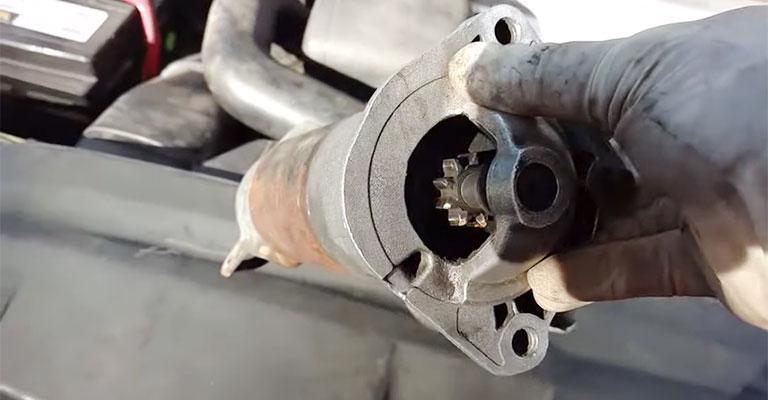
The starter motor is likely to be the problem if your car clicks when you turn the key, and the brake is hard. The first symptom may not be this one. Before the starter motor ‘catches’ and fires the engine, the car likely had difficulty starting.
Depending on the circumstances, your brakes may lock if your starter cable is disconnected from the battery. If this happens, you will also hear loud clicks when you turn your ignition key.
5. Ignition Switch Failure
It is not always the case that a hard brake pedal is the first sign that the ignition switch is bad. A car that stalls are another early symptom.
The keyless ignition in your car can be discarded as a possibility. Your ignition switch may be damaged if you drive an older vehicle.
You’re likely dealing with a faulty switch if you’re experiencing flickering dashboard lights, slow engine cranking, and broken brake lights.
Having a bad ignition switch might be the problem if you have an older car. An engine that is slow to crank and dashboard lights that flicker are signs of a bad ignition switch.
Look for brake lights when you press on your brakes to test your ignition switch. The ignition switch may be faulty if no brake lights are visible.
Fixing ignition switches is fairly easy and inexpensive. If you don’t have the skills to replace it, you can hire a mechanic to do it for you.
What To Do About Faulty Starter Cable?
Occasionally, the starter cable can become disconnected from the battery terminal, causing stiff brakes.
It’s possible that your starter motor is dead or faulty if you hear loud clicking sounds whenever you turn the key.
Fixing your car’s battery yourself is possible if you have some experience working on batteries. Otherwise, you should hire a mechanic.
6. Exhausted Brake Vacuum
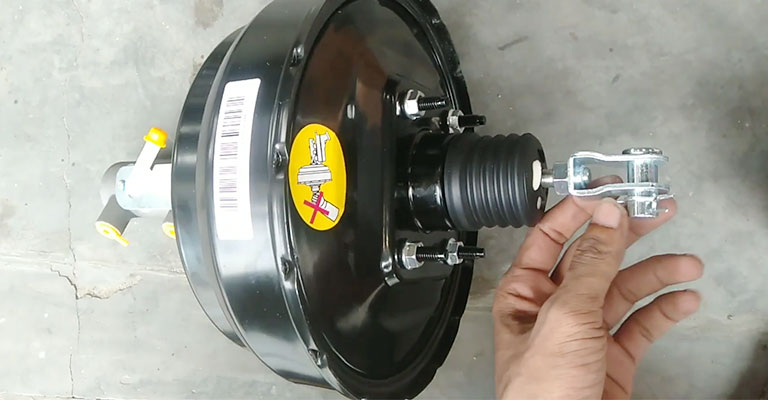
Vacuum leaks and faulty brake boosters can lead to a hard brake pedal. There must be a brake vacuum for the power assist feature in newer vehicles to work. You can get a stiff brake vacuum if you push on the brake without running the engine.
It is usual for the brakes to feel hard when the car is off because the vacuum is generated only when the engine is running.
However, a mechanic will need to test the brake booster and check for a vacuum leak if the brake pedal continues to feel hard after the vehicle has been running for some time.
During engine operation, a vacuum is generated. You will find it harder to activate the brake light switch after pressing the brake pedal a few times with the engine off.
The brake pedal will feel hard as soon as you press on the pedal a few times with the engine off. Press the brake pedal hard enough if you can’t get the brake lights to come on.
What Should I Do With Exhausted Brake Vacuum?
The power assist system in most modern cars is powered by a vacuum connected to the brakes. You may be exhausting the car’s reserve vacuum if you’ve been pressing the brakes without the engine running.
You will experience stiff brake pedals as a result. If the problem persists, try letting your car sit for a few minutes and then starting it again.
Once you have power assist, your brakes should return to normal if the brake vacuum was the problem.
7. Blown Fuses
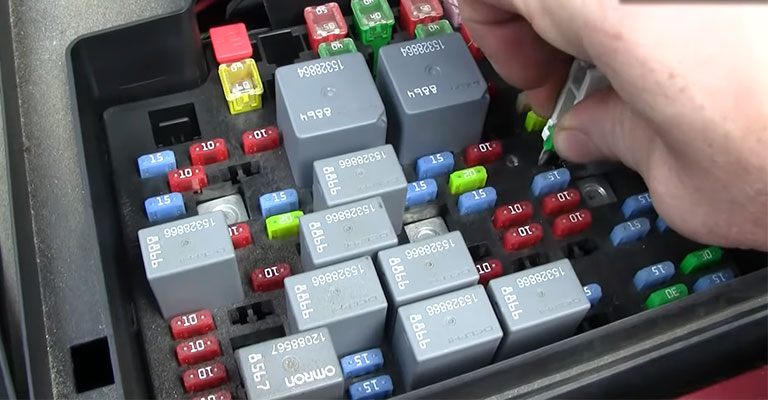
The car would also be unable to start if a fuse was missing or blown. Make sure there are no missing fuses in the fuse box. Check the connection between the two terminals of each fuse to see if it’s blown.
A bad fuse has a broken connection. If you find any blown or missing fuses, replace them, and try to start the car again. Make sure the car’s wiring is not damaged or corroded.
Battery cables must be tightened on the terminals of the battery. Wiring issues could prevent power from getting to a component and stop the car from starting.
8. Neutral Safety Switch
An automatic transmission’s neutral safety switch communicates the shifter’s position to the computer. The function of this switch is to only allow the car to start in park or neutral.
The car may not start if the neutral safety switch is malfunctioning. The shifter can be moved to different positions while you try starting the car to test it. In this case, the neutral safety switch probably needs to be replaced if the car starts while shifting.
9. Bad Battery
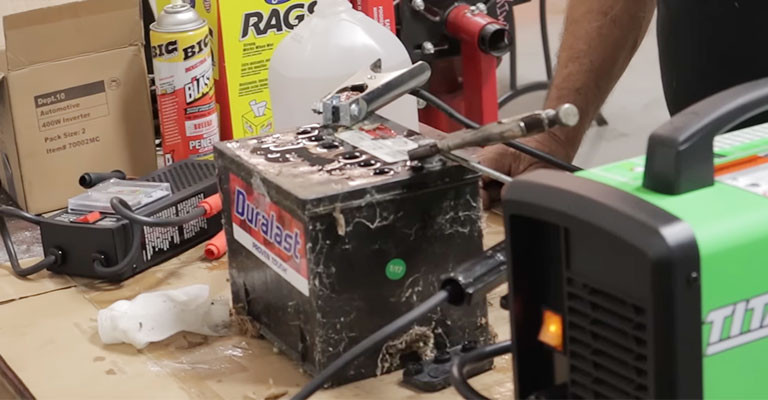
There is also the possibility that the battery is to blame. When the car is off, a battery voltage of 12.5 volts should be present. The car may start if the voltage is higher than that, but it may not start if it is lower.
During low voltage, the dash lights and other electronics may work, but the radio or door locks may not. Make sure the battery voltage is correct by using a multimeter. Replace the battery if the voltage is low, or charge the battery, jump-start, or charge the battery.
10. Brake Light Switch
A bad brake light switch can result in the brake lights not coming on when you press the brake pedal. By pushing the brake pedal, the brake light switch triggers the brake lights, and the car’s computer knows the brake pedal has been pressed.
The computer cannot receive this signal, either because the brake pedal is not pressed hard enough or due to a faulty brake light switch.
How Do Car Brakes Feel When Fully Depressed?
As soon as the engine starts, your brake pedal should feel stiff at first, before softening and depressing fully with minimal pressure.
What Is The Purpose Of Pumping The Brake Pedal When Starting The Engine?
Whether or not your vehicle requires you to depress the brake to start the engine, it’s good practice to do so. By doing so, it provides an additional layer of assurance that the engine will begin stationary.
How does ‘Depress Brake To Start Engine’ work?
Typically, automatic vehicles require you to press and hold the brake pedal before starting the ignition, either with your key or by pushing the button.
A safety feature, the brake pedal completes a circuit that allows the ignition to operate, preventing unintentional engine starts, such as if a child accidentally presses the start button while playing in the car.
If you try to start your car without pressing the brake, you will see a message on the dashboard that says ‘depress brake to start engine’.
How Much Will It Cost To Repair?
A car that won’t start and a hard brake pedal can have many causes, so the cost of repairing the problem will vary widely. However, an inexpensive fix could be as simple as replacing a bad fuse.
- Labor will cost an additional $75 to $100, while the part will cost between $50 and $100. It costs $75 to $125 per part for more expensive assemblies containing the lock. There won’t be much increase in labor costs, however.
- There is a wide range of prices for a replacement ignition switch. It is possible to replace the switch on some carmakers’ locks, while it is easier and cheaper to replace them as a separate unit on others.
- It costs between $60 and $150 to replace a bad starter motor. There is a range of $100 to $175 for labor. So approximately $160 to $325 is what you should expect to pay in total.
- There is an expensive fix for brake vacuum boosters. A part will cost between $150 and $300, and labor will cost another $200. So, an estimated $350 to $500 will be spent on the project.
- Fuse replacement is a cheap fix. Pay attention to the starter fix. Ensure that the amp rating is correct. There is a specific requirement for each make and model of car.
- An amp rating of 125 amps or more is generally considered to be adequate. It is possible that the fuse is not in the fuse box but rather ‘inline’ between the fuse box and the starter.
- For a battery replacement, a new one may cost between $100 and $200. Car shops are the most likely place to replace brake light switches, neutral safety switches, ignition switches, starters, or brake boosters.
- Replacement of a neutral safety switch generally costs $100 to $140. Labor costs will range from $60 to $100, while parts will cost around $40.
Final Words
A “hard” pedal can occur when anything causes a loss of vacuum within the brake booster, such as repeatedly pressing the brake pedal after the engine has been shut off.
If you press the START/STOP button, the vehicle will go to the accessory instead of starting if the brake pedal doesn’t move enough to activate the brake switch.
After turning on the brake lights, pressing the pedal firmly enough should allow it to start. Once the engine starts, you should feel the pedal sink.
The brake pedal cannot be pressed under any circumstances because there are no mechanical interlocks. So, activating the brake lights was just a matter of pressing the brake pedal hard enough after your buddy pressed the unlock button.
A brake booster should hold enough vacuum to allow the brake pedal to be easily depressed at least 1 to 2 times, even after the vehicle has been sitting for a day or two or more.
Suppose you’re absolutely certain that nobody is depleting the vacuum supply in the brake booster by pressing the brake pedal after shutting the engine off. In that case, you may have a faulty check valve or a leaking brake booster.

Leave a Reply